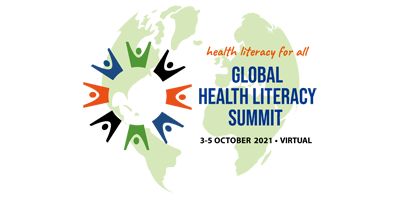Abstract Preview
Abstract
|
Title Socio-economic disparity and ethnic difference of Health Literacy among multi-ethnic suburban population in Malaysia |
|
Type Poster Presentation Only |
|
Theme Global Health Literacy Summit 2021 |
|
Topic Others |
Authors
|
Main Author Sanpagavalli Doraimuthu1 5 |
|
Presenting Author Sanpagavalli Doraimuthu1 5 |
|
Co-Author Tin Tin Su2 Maznah Dahlui1 3 Desiree Schliemann4 Michael Donnelly4 Nor Saleha Ibrahim tamin5 saunthari Somasundaram6 |
Authors' Institution
|
Department / Institution / Country 1. Centre for Population Health (CePH), Department of Social and Preventive Medicine / University Malaya / Malaysia1 South East Asia Community Observatory (SEACO) & Global Public Health, Jeffery Cheah School of Medicine and Health Sciences / Monash University Malaysia / Malaysia2 Department of Health Policy and Management / University Airlangga / Indonesia3 Centre for Public Health and UKCRC Centre of Excellence for Public Health / Queen’s University Belfast / United Kingdom4 Non Communicable Disease / Ministry Of health / Malaysia5 National Cancer Society / National Cancer Society, Kuala Lumpur, Malaysia / Malaysia6 |
|
Abstract Content (abstracts should be written in Size 11 font, Arial font style) Introduction Adequate health literacy (HL) empowers people to be able to read, obtain, comprehend and process health-related information from various sources to assist in making sound decisions pertaining to their health condition. Aim To determine the level of HL and factors associated with HL Methods A questionnaire survey was conducted among randomly selected community-dwelling adults in Rawang, a suburban area in Selangor state, Malaysia from January to March 2018. The questionnaire assessed the sociodemographic and general HL level in population by using 6 items European HL questionnaire. HL was divided into 3 categories: < 2 is inadequate HL, > 2 - < 3 is limited HL, and > 3 is sufficient HL. HL was finally dichotomized into “sufficient” and “insufficient” categories by combining limited HL to inadequate HL categories. Results Analysis was carried out on 954 respondents (54.1% Malay, 11.5% Chinese, 27.7% Indian, and 6.7% Others). The mean for HL was 2.88 (0.60) Conclusion HL must be advocated to people from lower socio-economic backgrounds to balance the striking disparities of health in Malaysia. The tailor-made HL education should be targeted to particular ethnic groups to raise the community with adequate health knowledge and awareness to assist in proper decision-making related to preventive health. |
Requires Audio or Video system for Presentation?: No
